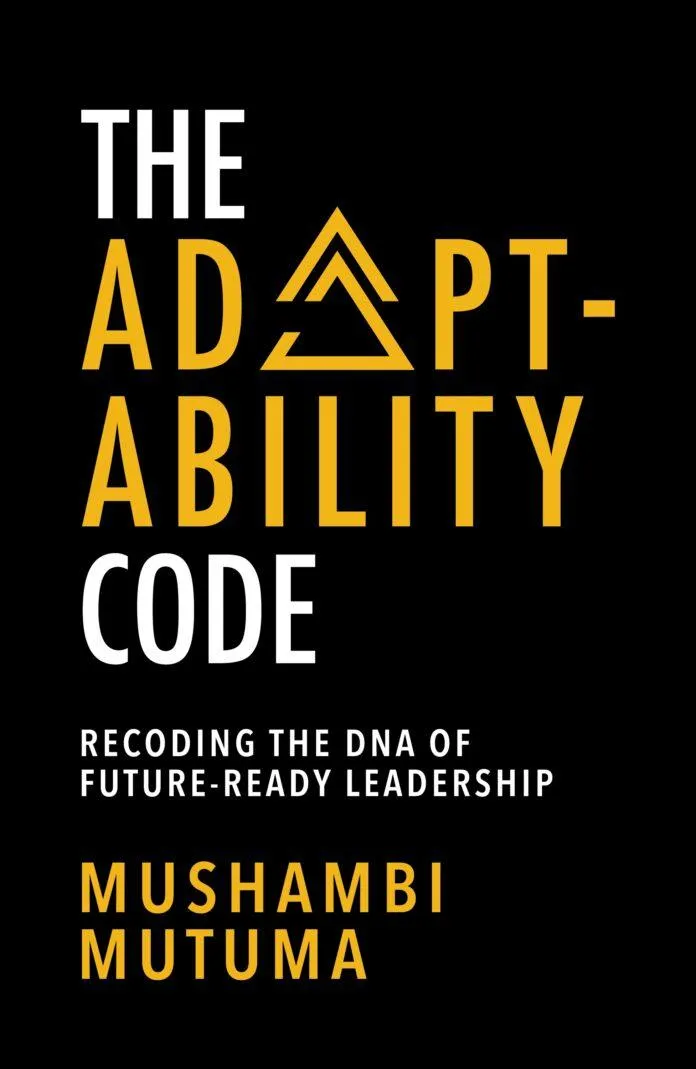The Adaptability Code: Leadership That Moves, Learns, and Surprises
Five strands, one provocation: lead like you mean it.

Adaptability becomes actionable in this guide, with practical tools and a leadership framework rooted in emotional intelligence and tech fluency
Image: Supplied.
Sometimes leadership sneaks up on us. The ground shifts. Familiar strategies stop working. I know that sensation—the churn when last year’s playbook no longer applies. The only sensible response is movement. Genuine, awkward, sometimes exhilarating movement.
Reading The Adaptability Code, by Mushambi Mutuma cracked open a window for me. This is not a survival manual. It is a provocation. It tempts me to ask what leadership could become if we truly lived these five strands, not just framed them as slogans.
Foresight
Foresight catches me at odd moments. How often do I look beyond the next deadline or inbox? Future-ready leadership asks me to pause and scan the horizon. To notice not just ripples but unpredictable waves. Am I willing to admit when I do not know, just to be better prepared next time?
Resilience
Resilience is not a platitude. It is the shaky “let’s try again” after failure. It helped me survive setbacks and salvage something inside the letdown. Resilience does not mean pretending I am unbreakable. It means bouncing, not breaking—and gathering my people for another go, just a little wiser.
Agility
Agility is the permission slip I write myself when the plan no longer fits. Do I cling to the old route because it is familiar, or let curiosity open a side door? Real learning happens in the pivot. Sometimes I say out loud, today’s plans are less important than today’s surprises. That keeps momentum alive.
Curiosity
Curiosity keeps me from getting stuck in my own cleverness. My best ideas rarely come from sitting alone. They come from wandering into someone else’s thinking or asking what I am missing. The aha moments live just outside the edges of what I already know.
Care
Care gives all the other traits dimension. It is not about being nice. It is about seeing people as they are—with awkwardness and brilliance. Vulnerability makes me a better leader, not a weaker one. When I show up with honesty and interest, people meet me there and surprise me every time.
Action Over Perfection
Most teams freeze waiting for perfect. That has never been my strength. This manifesto urges me to value action over polish. Test ideas in the real world. Lead with curiosity. Let learning bubble up even when clarity is absent. Adapting in plain sight teaches more than plotting in secret ever could.
Tools for Growth
The DNA Growth Scan is a brutally honest check-in. Where am I strong? Where am I still bluffing? I invite a trusted colleague to score me too. We swap stories until something worth improving floats up. It is not comfortable, but it is alive.
I also turn to the SCARF principle when tension rises. I ask whether this person feels valued, has clarity, autonomy and fairness. These questions usually reveal what is really going on.
Leading Where Tech Meets Humanity
Adaptability in a tech world means understanding AI and digital trends—and knowing when to pull back. I encourage learning sprints. I ask whether this tool serves our purpose or is a shiny distraction. I experiment openly and translate complexity into real conversations so no one is left behind.
Inspiration from the Field
Reading about Satya Nadella and Microsoft reminded me that breakthroughs are not just for tech giants. Any leader can build momentum and a culture of curiosity, learning and shared vulnerability. The best case studies come from people around me—those who try, fail, pivot and rise again. I add their stories to my own leadership archive.
My Non-Negotiables for Growth
I pause to name my emotions, sometimes awkwardly, often quietly. I listen to understand, not just to reply. I give myself six seconds before responding to criticism. That pause has saved more relationships than any script I have ever tried. I model these habits in my teams too. Collective reflection always calls up more wisdom than going solo.
My 12-Month Roadmap
Every lofty goal needs messy action steps. I start with uncomfortable self-assessments, set bold but tangible goals and appoint an accountability partner to keep me honest. Each month, I commit to one lived experiment, one digital pilot and one honest check-in. At year’s end, I celebrate the stumbles as much as the wins.
The Takeaway
Every paragraph in this book invites reflection. Where do you need to be more curious? Who needs your care today? When did you last give yourself permission to pivot or to fail publicly? Which tech truly serves your mission and which is just noise?
This isn’t about perfection or certainty. It’s about learning in motion, choosing progress over hesitation and reconnecting with purpose through honest human connection.
If you are ready, try it your own way. That is where the real aha lives.
* The Adaptability Code is published by Tracy McDonald Publishers.
Related Topics: